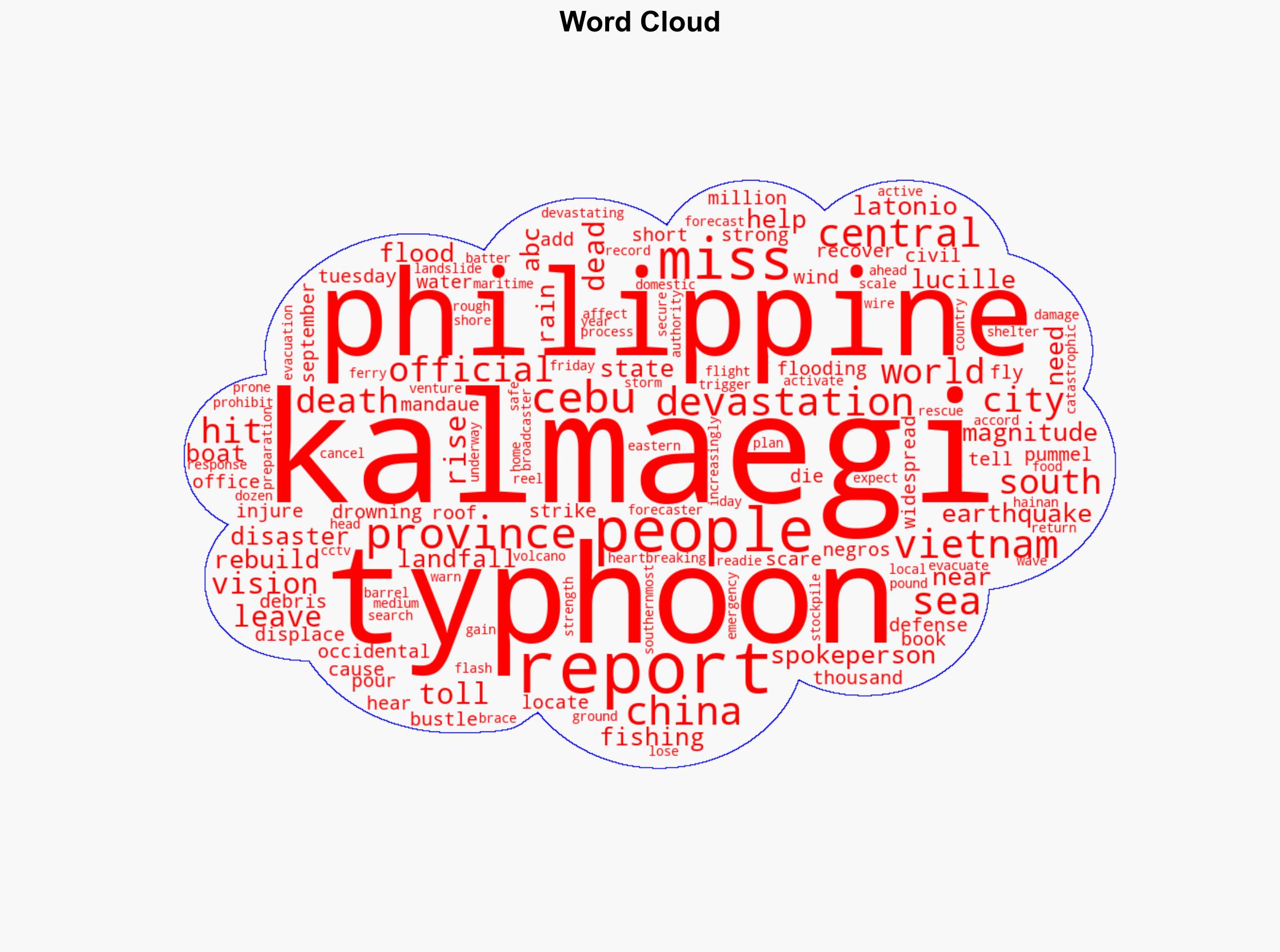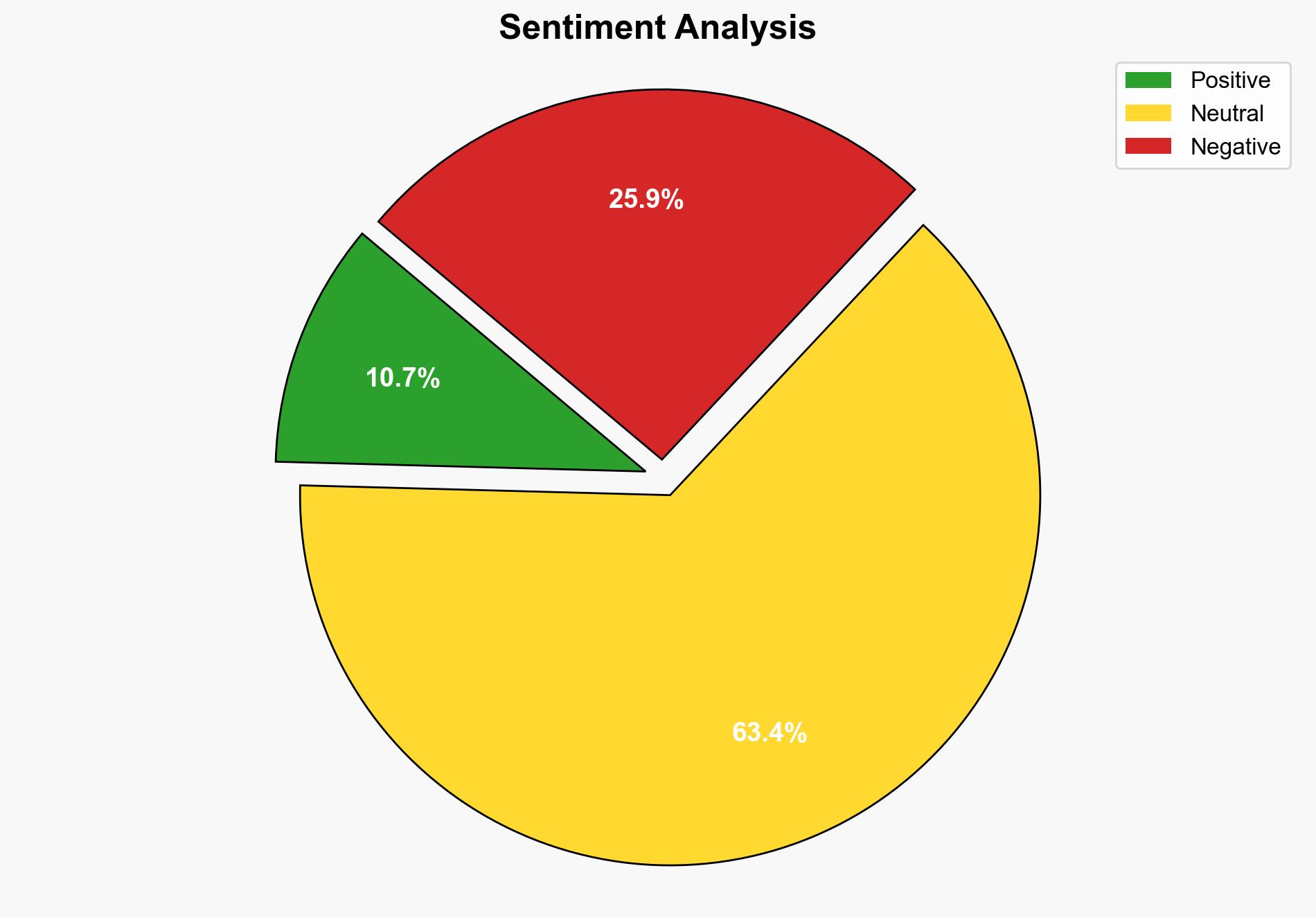Typhoon Kalmaegi leaves 114 dead and 127 missing in Philippines – ABC News (AU)
Published on: 2025-11-06
Intelligence Report: Typhoon Kalmaegi leaves 114 dead and 127 missing in Philippines – ABC News (AU)
1. BLUF (Bottom Line Up Front)
The most supported hypothesis is that the high casualty and missing persons count is primarily due to the compounded effects of Typhoon Kalmaegi and pre-existing vulnerabilities from previous natural disasters. Confidence level: Moderate. Recommended action: Enhance disaster preparedness and response capabilities in affected regions, focusing on infrastructure resilience and community education.
2. Competing Hypotheses
1. **Hypothesis A**: The casualties and missing persons are primarily due to the immediate impact of Typhoon Kalmaegi, exacerbated by inadequate evacuation and response measures.
2. **Hypothesis B**: The high casualty and missing persons count is a result of compounded vulnerabilities from previous natural disasters, such as the recent earthquake, which weakened infrastructure and community resilience.
Using the Analysis of Competing Hypotheses (ACH) 2.0, Hypothesis B is better supported. The report indicates pre-existing vulnerabilities from a recent earthquake, suggesting that infrastructure and community resilience were already compromised before the typhoon.
3. Key Assumptions and Red Flags
– **Assumptions**: It is assumed that the reported numbers of casualties and missing persons are accurate and that the response measures were uniformly inadequate across affected regions.
– **Red Flags**: The report lacks detailed information on the specific areas most affected and the effectiveness of local government response efforts. There is also no mention of potential discrepancies in casualty reporting.
4. Implications and Strategic Risks
The compounded impact of multiple natural disasters could lead to long-term socio-economic challenges, including displacement, loss of livelihoods, and increased poverty. There is a risk of inadequate international aid response due to disaster fatigue. Geopolitically, this could strain regional cooperation if neighboring countries are also affected by the typhoon’s trajectory.
5. Recommendations and Outlook
- Enhance infrastructure resilience through investment in disaster-proof construction and retrofitting existing structures.
- Implement comprehensive community education programs on disaster preparedness and response.
- Scenario-based projections:
- Best: Effective international aid and local government response lead to rapid recovery and improved resilience.
- Worst: Continued natural disasters exacerbate vulnerabilities, leading to a humanitarian crisis.
- Most Likely: Gradual recovery with ongoing challenges due to infrastructure damage and economic strain.
6. Key Individuals and Entities
– Lucille Latonio (World Vision Philippines spokesperson)
7. Thematic Tags
natural disaster response, infrastructure resilience, humanitarian aid, regional cooperation





